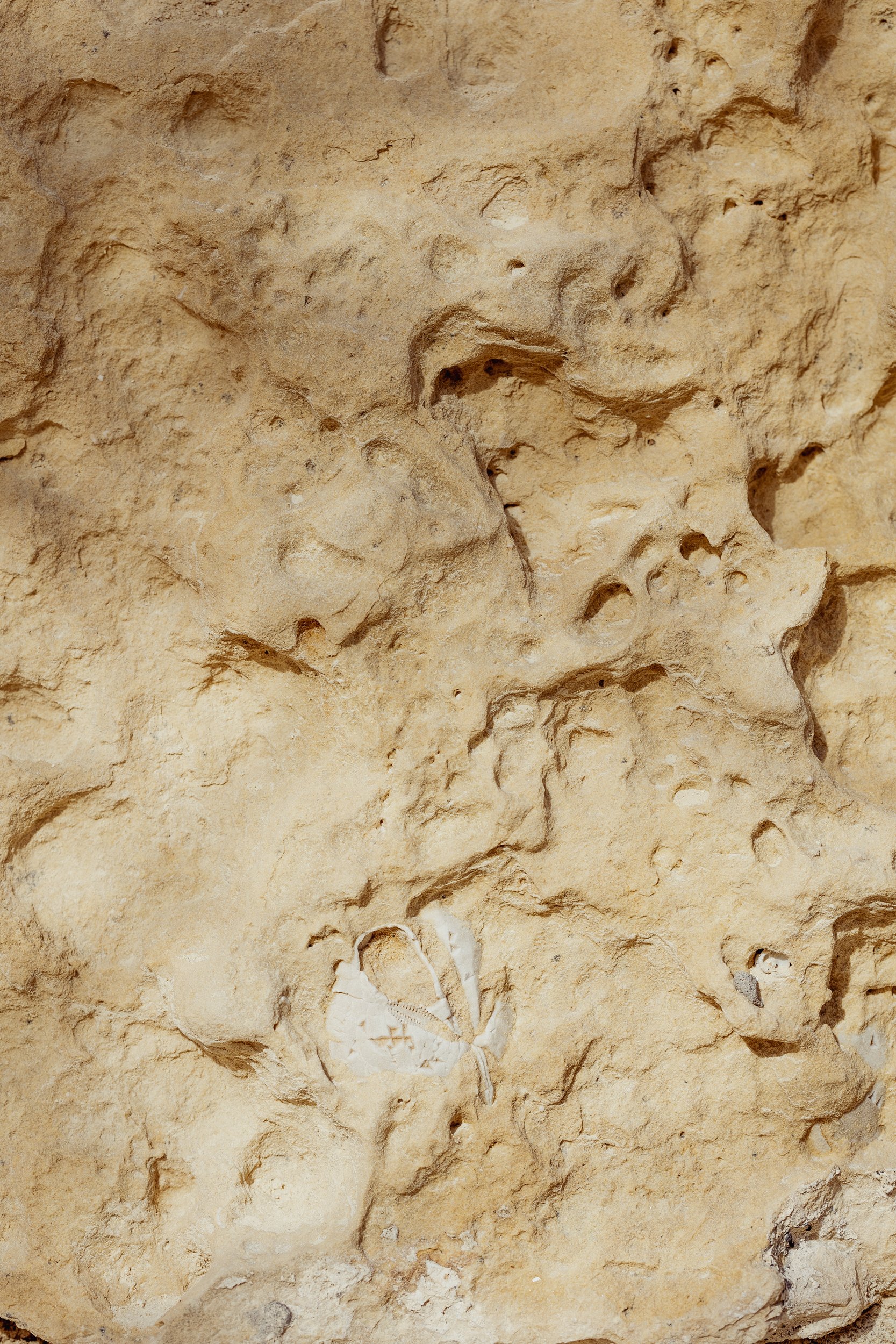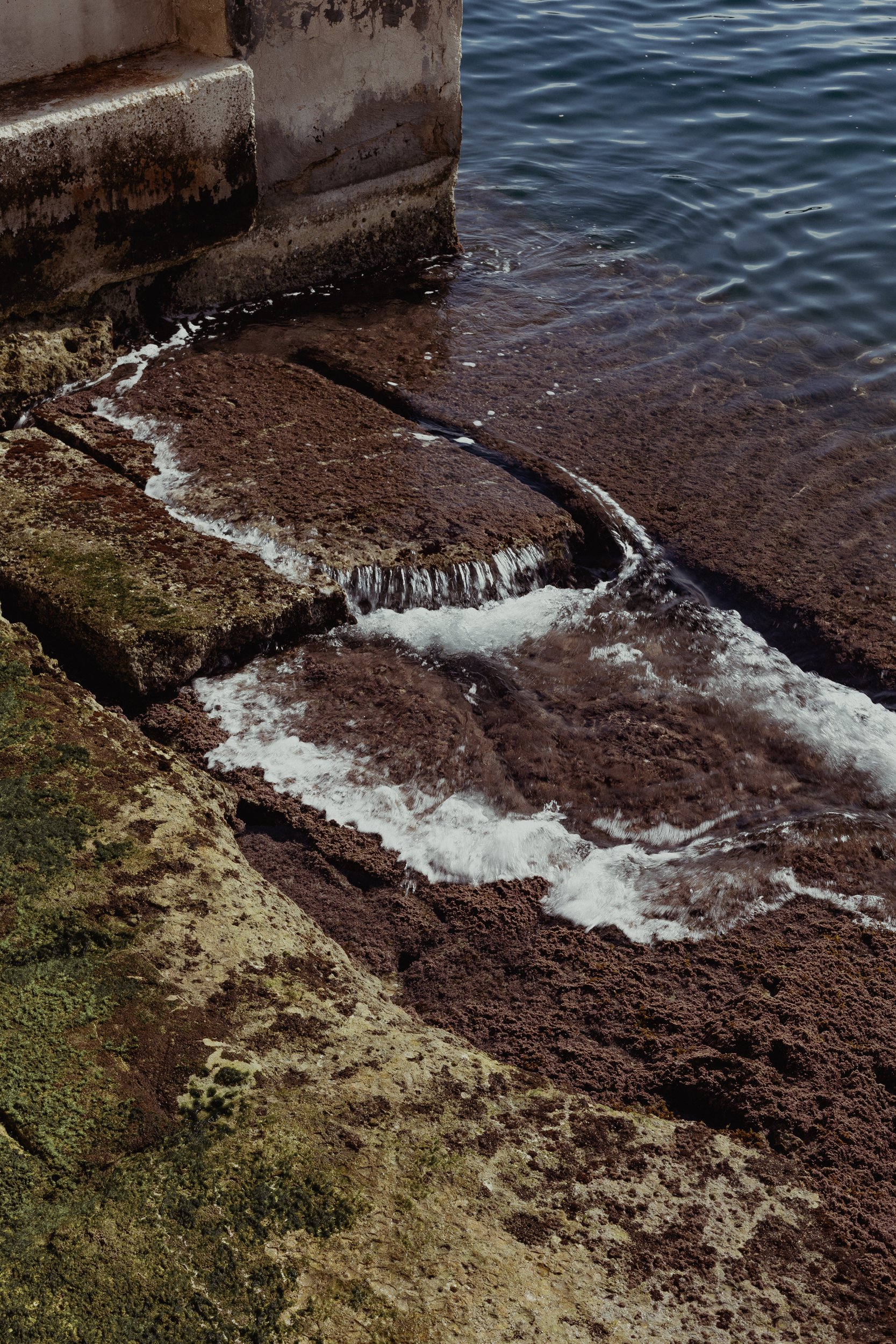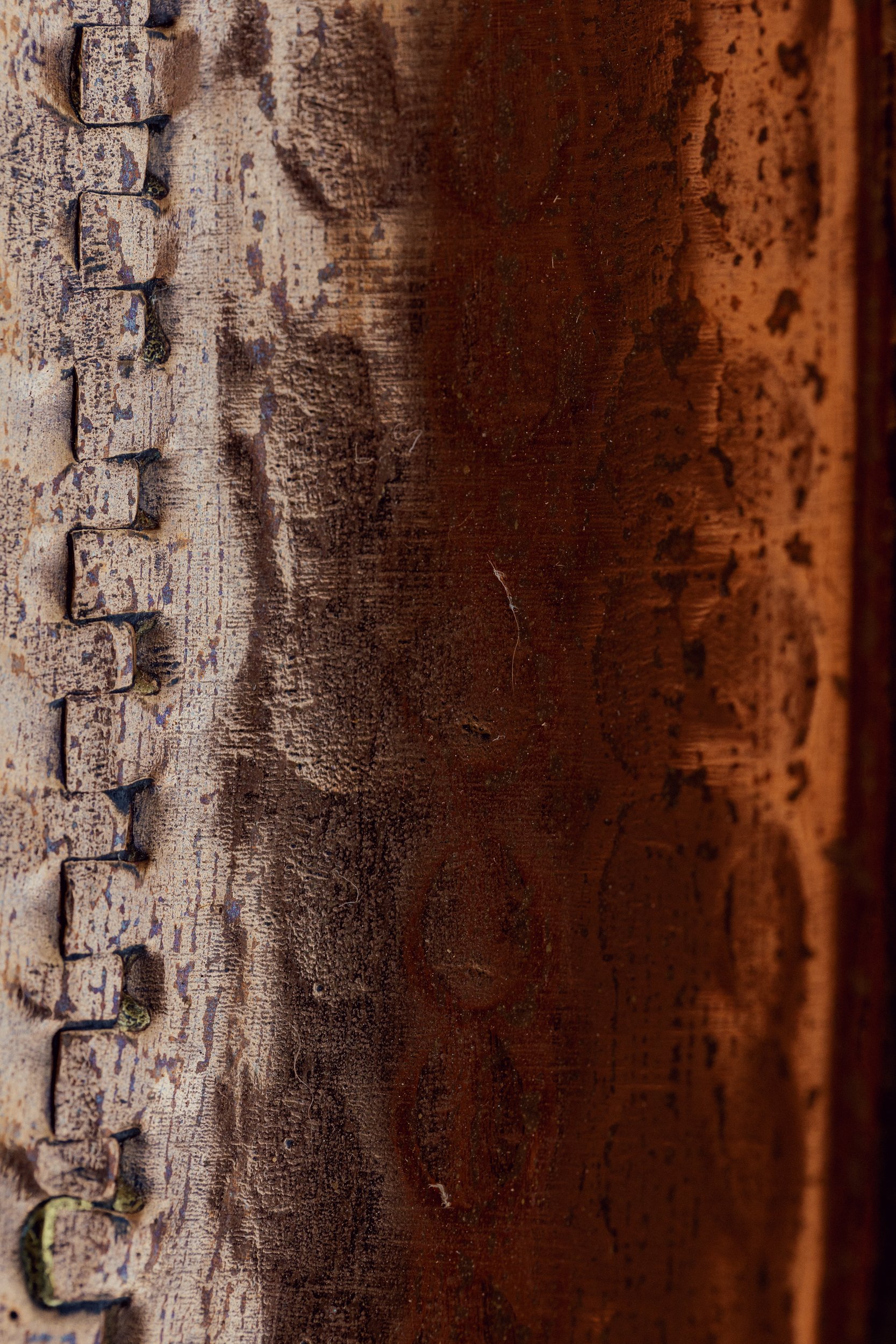POETICS OF AN ARCHIVE
The water reflects upon what it sees. In this way it acts as a door to another territory, a container that can consume and transport bodies to generate new lands. The sea is an archive that preserves stories told and untold. In this installation of works by Mariana Hahn and Simon Riccardi-Zani, a trajectory is drawn charting the sensitivity and poetry embedded within the sea's abundant womb.
Photo by Julian Vassallo
A curator from Malta can’t disassociate themselves from the substantial impact that the sea has on our collective and individual experience of culture and identity. This place that constantly receives people, forms its identity from the residue that they leave.
Since our first encounter in Malta in 2019 I have been fascinated by the deeply spiritual way in which Mariana Hahn has connected to our island. In the gentle recesses of the saltpans—both the natural pools and the man-made gridwork—she found a location for ritual and performance; a location for conversation between us and the land. The key word here is ‘found’. Mariana’s artistic practice seems to me to be led by an intuition to find. The same spirituality which she remembered from the saltpans, she found in the Pixkerija, a fish market in Valletta. In the doors to the stalls within it she saw the passage of time, an incredible ecosystem, of fungus, salt and algae—but also the handprints of people across time. In this way she has decided to form a slipway and a seabed out of these objects she found—another liminal, space of transition, a threshold.
A womb contains something which finds itself within it. It holds it and collects it and in many ways the two, act and grow as one. The sea operates in much the same way. It swallows, and then it releases, it holds only soon after to wash back out onto the shore—and in the process the mark of each is left upon the other. The copper basins flattened to resemble coins patinate as the water and its salt meets their surface. They assume the character that this alchemical relationship brings, a metaphysical bond that transcends the limits of their solid form.
For some time now, Simon Riccardi-Zani has called Malta home. In his narrative-based work I understand that the texture and tactility of our stone has transmitted a tangible imprint upon his practice. In between the patinations of the blue doors and copper containers, the work of Simon weaves bodies into the space. Just like with the two nations of the pavilion, the work showcases the impact of one’s flesh on the other. It does away with borders to create a poetry that is shared. In the malleability of a surface as harsh of stone, we learn of the elasticity that our own flesh has to offer. As the elements come together, nothing escapes the entropic laws of nature. Malta has become an important layer within Simon’s practice. The Mediterranean waters in his hometown in Nice and in Valletta’s Grand Harbour are a linked volume constantly in flux. Where we come from and where we go becomes tantamount to what we do and create—focal to the story that comes to define us, elastic and soon after compacted, just like the sea.
Directed by James Vernon
Both artists propose salt as an important mediator of their main subjects. Salt preserves and corrodes at the same time, so that everything under its impact lives at the threshold—the door between Eros and Thanatos, an edge between the living and the dead. The knowledge it embeds within all which it comes in touch with is saved like in an archive. In the patination, it transfers identity and in the exchange it finds potential for constant renewal. This is what binds the artworks of the pavilion—an understanding of the potential that the sea has to mediate, to bring together, to store and to start afresh.
The frugal nature of the works takes stories, objects, images and sounds from the Pixkerija in Valletta and the saltpans in Xwejni and transports them to fortified St Elmo. Even here, the imprint of the sea can be felt in the eroded stone which frames the pavilion. Poetics of an Archive discusses ideas of nationhood and personhood and establishes a new language by which to emulate their truly borderless nature. It listens to the natural environment to inform the man-made, rather than succumbing to the opposite. In this way it opens new dialogues on the future of our seas and the nature of our world—stretching out to continue conversations elsewhere.
Starting in the Mediterranean, this conversation holds a power to inspire far greater movements elsewhere. Hahn and Riccardi-Zani’s investigative work applies both a personal and global scope to the context within which the pavilion operates. Poetry is a language that transcends the words we speak, and through the work of these artists the pavilion of France and Germany creates a platform for the echoes of its sounds to be heard.
Catalogues, photos by Lisa Attard






